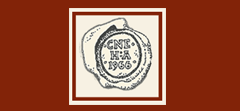Abstract
This article describes a study of New England cookbooks as a data source for historical archaeologists. The database for this research consisted of single-authored, first-edition cookbooks written by New England women between 1800 and 1900, together with a small set of community cookbooks and newspaper advertisements. The study was based on the belief that recipes are equivalent to artifact assemblages and can be analyzed using the archaeological methods of seriation, presence/absence, and chaîne opératoire. The goal was to see whether change through time could be traced within a region, and why change occurred; whether it was an archetypal shift in food practice, modifications made by only a few families, change that revolved around elite consumption patterns, or transformations related to gender and other social forces unrelated to market price. The role of technology, as seen through the adoption of kitchen stoves and new modes of cooking, was a concern. Seriation highlights times and places in which ideas change and new ones emerge in novel forms. Its employment revealed changes among the nuts, fruits, and vegetables used in desserts. Analysis based on the chaîne opératoire approach indicated that the number and sequence of steps in food preparation changed as women became familiar with stove cooking. The influence of domestic reformers and physicians became evident; but it was also clear that many of the changes within New England foodways percolated throughout the region from the bottom up after appearing among lower socioeconomic levels of society.
DOI
10.22191/neha/vol42/iss1/8
Recommended Citation
Yentsch, Anne
(2013)
"Applying Concepts from Historical Archaeology to New England's Nineteenth-Century Cookbooks,"
Northeast Historical Archaeology:
Vol.
42
42, Article 8.
https://doi.org/10.22191/neha/vol42/iss1/8
Available at:
https://orb.binghamton.edu/neha/vol42/iss1/8


